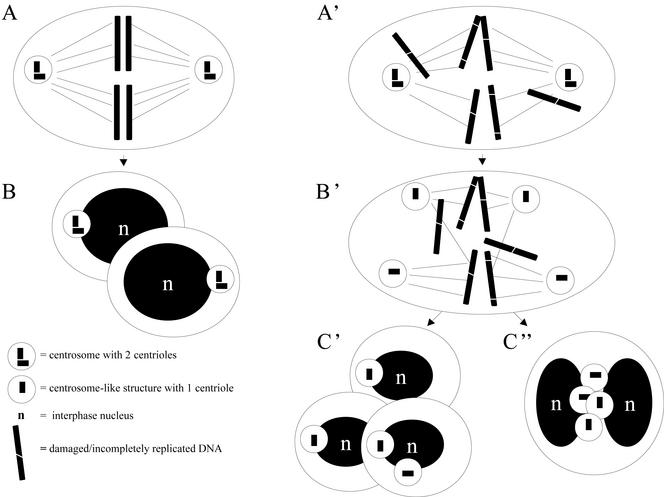Figure 8.
Centriole splitting occurs in the presence of impaired DNA integrity during mitosis and may lead to aneuploidy. (A) Under control conditions, at mitosis, a bipolar spindle is formed containing two centrosomes located at the spindle poles, and the DNA is aligned in the metaphase plate. (B) Mitotic exit results in the formation of two identical daughter cells containing one centrosome each consisting of two centrioles. (A') In the presence of damaged or incompletely replicated DNA, mitosis starts with a bipolar spindle containing two centrosomes, and the chromosomes are not aligned in the metaphase plate. (B') Centrioles split early in mitosis, extra centrosome-like structures arise, and multipolar spindles are being formed. (C′) After a severe mitotic delay, cytokinesis can result in the formation of more than two daughter cells, and aneuploid cells are being formed, or (C”) a failed cytokinesis results in the formation of one cell with multiple nuclei and extra centrosome-like structures. In the absence of a functional checkpoint (e.g., in a P53-/- background), these polyploid cells may progress through the cell cycle (see also Borel et al., 2002; Meraldi et al., 2002), and after DNA replication and centrosome duplication, multipolar spindles will arise in the next mitosis, resulting in chromosome instability and aneuploidy.

